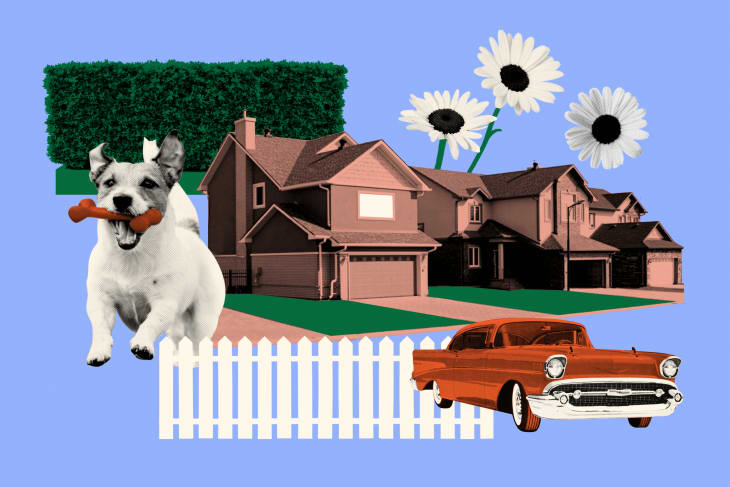What Makes a Suburb a Suburb? Nobody Knows

If you’re like me, when you hear the word “suburb,” images of manicured lawns, families strolling down sidewalks, and neat rows of cookie-cutter homes immediately come to mind. However, when you ask the experts what they think of every time they hear that word, you’ll likely get a variety of different answers. This is because, according to the pros, the definition of suburbia lies in the eye of the beholder.
HUD only has strict definitions for urban and rural areas.
When you want to get the facts about housing questions, the U.S. Department of Housing and Urban Development, or HUD, is usually the best place to go. However, when it comes to understanding the suburbs, the folks at HUD are just as unsure about the defining characteristics as I am. Just take this article from HUD senior leadership that reviews the results of the American Housing Survey of 2017.
In the article, experts from HUD, the U.S. Census Bureau, and Indeed poured over responses from nearly 76,000 people who were tasked with defining their neighborhoods as either rural, urban, or suburban. At the time, 21 percent said they lived in a rural area, 27 percent responded that they resided in an urban area, and 52 percent claimed to be living in suburbia. The problem with the findings? At the time the federal government provided no official guidance defining the qualities that make a suburb, well… a suburb.
According to Bloomberg, HUD didn’t make much headway in coming up with a definition in the years that followed. In 2020, the same three organizations once again tried to hash out the defining characteristics of a suburb, only to be thwarted by the people living in the very areas they wanted to classify. After asking a group of 55,000 people the same question they asked in 2017, they discovered a whopping 47 percent of people living in homes that meet the federal definition for urban areas considered themselves to be proper suburbanites.
What is a suburb?
To try and get some answers, I talked to Franklin Forbes, an architect, urban planner, and CEO at Blistey, a directory of BIPOC-owned businesses. According to Forbes, the accepted post-1950s definition of a suburb is an area featuring low-density buildings and housing. It’s primarily residential and lies outside a city’s perimeter. “Pre-1950, that definition would be the same but with larger land plots within the city’s periphery than a typical urban plan,” he says.
Those dates are important, according to Forbes, because the definition of suburbs changes regionally and culturally based on when the houses were built. “An example would be the neighborhoods in Brooklyn planned pre-war — they’re located inside a major city but still follow a low-density model,” he says. “Similar neighborhoods in Chicago follow the same suburban/urban plan. Avalon Park and Beverly in Chicago were built pre-war and tried to create a getaway from urban sprawl.”
Suburbia is more of a feeling than a fact.
The definition of the suburb has always been malleable because it is partly based on emotion, according to Forbes. “Those emotions lay outside the typical parameters for low-density detached housing in suburban life,” he says. “People typically associate suburban life with safety, better schools, a less hectic lifestyle, and personal green space for their families.”
All of this can cause the definition of the suburbs to be based on how people feel about where they live. “These feelings can sometimes translate to living inside what some might consider an urban-suburban oasis,” Forbes adds.
But like most things in this country, not everyone shares the same views about what makes an oasis. According to IIeana Schinder, an architect in Washington, D.C., and author of “Housing for Humans: A Book to Imagine, Create and Design a New Housing Model in America,” the idea of the suburbs touches at the very core of America.
“America is different things for different people. For some, the suburb is the idyllic context to raise a family with a yard, two cars, and a barbecue pit,” Schinder says. “For others it is a traffic nightmare in which you are trapped in your car because you forgot to buy ketchup.” Because of this, she says it’s hard to define suburbs as “bad” or “good.”
Schinder concludes that while the value of a suburb isn’t necessarily black or white, urban designers, architects, and even sociologists have been questioning the car-dependent, isolated culture for the past 30 years. “There is a strong return to living a more shared life (from sidewalks to parks) and [a less individualistic mindset],” she says.
In the end, it seems like the best and most accurate way to determine whether or not an area qualifies as being part of suburbia is to ask the people who live there. It’s like most things people struggle to properly articulate: you may not be able to describe it, but you know it when you see it.